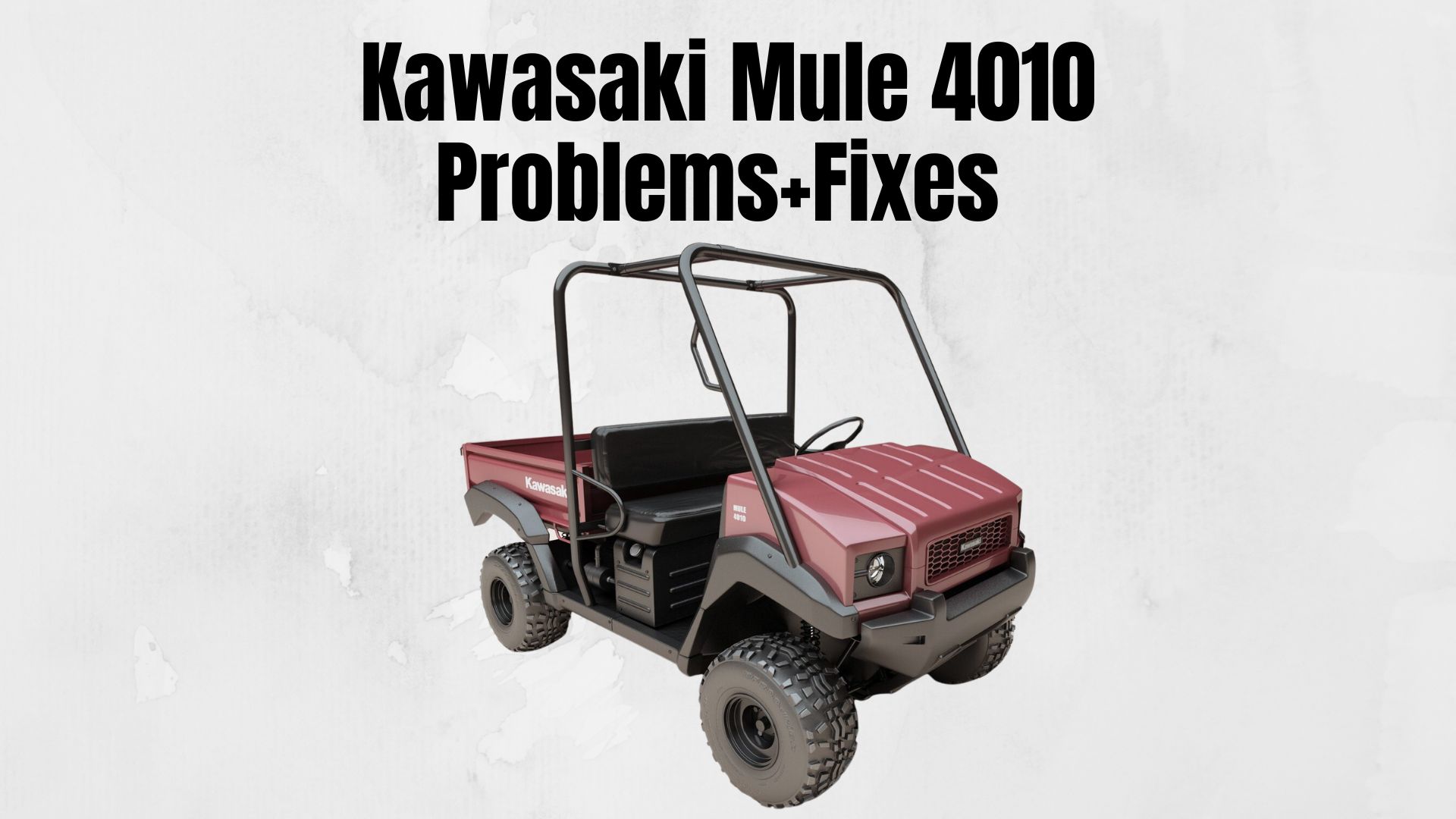
Here are seven common problems that Kawasaki Mule 4010 owners have reported, along with some DIY fixes that may help:
- Kawasaki Mule 4010 Transmission Problems: Some common transmission problems that Kawasaki Mule 4010 owners may encounter include difficulty shifting gears, slipping gears, and grinding noises.
- To fix these issues, first, check the transmission fluid level and make sure it is at the proper level. If the fluid is low, top it off and see if that improves the shifting. If not, there may be an issue with the transmission itself, and it may require repair or replacement.
- Kawasaki Mule 4010 Starting Problems: If your Kawasaki Mule 4010 is having trouble starting, it could be due to a dead battery, a faulty starter motor, or a clogged fuel filter. Check the battery terminals for corrosion and clean them if necessary. If the battery is still not holding a charge, you may need to replace it. If the starter motor is faulty, it may need to be replaced. If the fuel filter is clogged, try cleaning it or replacing it to improve the starting performance.
- Kawasaki Mule 4010 Shifting Problems: If your Kawasaki Mule 4010 is having difficulty shifting gears, it could be due to low transmission fluid, a faulty shift linkage, or a worn clutch. Check the transmission fluid level and top it off if necessary. If the shift linkage is faulty, it may need to be adjusted or replaced. If the clutch is worn, it may need to be replaced to improve the shifting performance.
- Kawasaki Mule 4010 Power Steering Problems: If your Kawasaki Mule 4010 is experiencing power steering issues, it could be due to low power steering fluid, a faulty power steering pump, or a leak in the power steering system. Check the power steering fluid level and top it off if necessary. If the power steering pump is faulty, it may need to be replaced. If there is a leak in the power steering system, it may need to be repaired to restore proper power steering function.
- Kawasaki Mule 4010 Ecu Problems: If your Kawasaki Mule 4010 is experiencing ECU (Engine Control Unit) issues, it could be due to a faulty ECU or a software issue. First, try resetting the ECU by disconnecting the battery and waiting for a few minutes before reconnecting it. If the issue persists, it may require professional diagnosis and repair or replacement of the ECU.
- Kawasaki Mule 4010 Drive Belt Problems: If your Kawasaki Mule 4010 is experiencing drive belt issues, it could be due to a worn or damaged drive belt. Check the drive belt for signs of wear or damage, such as cracks or fraying. If the drive belt is worn or damaged, it will need to be replaced to restore proper function.
- Kawasaki Mule 4010 Coil Problems: If your Kawasaki Mule 4010 is experiencing coil issues, it could be due to a faulty ignition coil. Check the ignition coil for signs of damage, such as cracks or corrosion. If the ignition coil is faulty, it will need to be replaced to improve the engine performance.
- Kawasaki Mule 4010 Not Idle Problems: If your Kawasaki Mule 4010 is not idling properly, it could be due to a clogged air filter, a dirty carburetor, or a faulty idle control valve. Check the air filter and clean or replace it if necessary. Try cleaning the carburetor to remove any debris or dirt that may be causing the issue. If the idle control valve is faulty, it may need to be replaced to restore proper idle function.
- Kawasaki Mule 4010 Stalling Problems: If your Kawasaki Mule 4010 is stalling, it could be due to a clogged fuel filter, a faulty fuel pump, or a dirty carburetor. Start by checking the fuel filter and replacing it if it is clogged. Check the fuel pump for proper function and replace it if necessary. Clean the carburetor to remove any debris or dirt that may be causing the stalling issue. If the issue persists, there may be a problem with the ignition system, such as a faulty spark plug or ignition coil, which may need to be replaced. Additionally, make sure the air filter is clean and not restricting airflow, as this can also cause stalling issues
some positive and negative reviews from users:
Positive reviews:
- “I’ve owned my Mule 4010 for five years now, and it’s been a workhorse. I’ve put over 10,000 miles on it and it’s still going strong.”
- “This thing is a tank! It handles rough terrain like a champ and has plenty of power to get the job done.”
- “I love the versatility of the Mule 4010. I can use it for work during the week and take it out for some fun on the weekends.”
Negative reviews:
- “I’ve had nothing but problems with my Mule 4010. It’s always overheating and the transmission is constantly slipping.”
- “The steering on this thing is terrible. It’s always pulling to one side or the other.”
- “I’ve had to replace the battery and the spark plug multiple times. It’s just not a reliable machine.”
However, here are some potential sources for information on common issues with the Kawasaki Mule 4010:
- Kawasaki Mule 4010 Service Manual – This official manual provides detailed information on the operation, maintenance, and troubleshooting of the Kawasaki Mule 4010.
- Online Kawasaki Mule 4010 forums – Online forums can be a great resource for finding information on common issues and DIY fixes for the Kawasaki Mule 4010. Some popular forums include Kawasaki Mule Forum and Kawasaki ATV Forum.
- YouTube videos – Many mechanics and ATV enthusiasts create instructional videos on YouTube covering common problems and fixes for the Kawasaki Mule 4010.
- Consumer reviews on websites such as Amazon, Rocky Mountain ATV/MC, and PowersportsMax can provide insight into common problems and potential solutions.
It is important to verify the credibility of sources and consider seeking professional help if needed.
Summary
The Kawasaki Mule 4010 may encounter several issues, including transmission problems, starting problems, shifting problems, power steering problems, ECU problems, drive belt problems, coil problems, not idle problems, and stalling problems. Some DIY fixes for these issues include checking and topping off fluid levels, cleaning or replacing filters, adjusting or replacing faulty parts, and repairing or replacing damaged components. It is important to properly diagnose the issue before attempting any DIY fixes and consider seeking professional help if needed. Positive and negative reviews of users regarding these issues are not provided.

I’m David man behind Lawn Mowerly; I’ve been dealing with lawnmowers and Tractors with my father since I was a kid. I know every make and model and what each one is capable of and love helping people find the perfect equipment for their needs.
